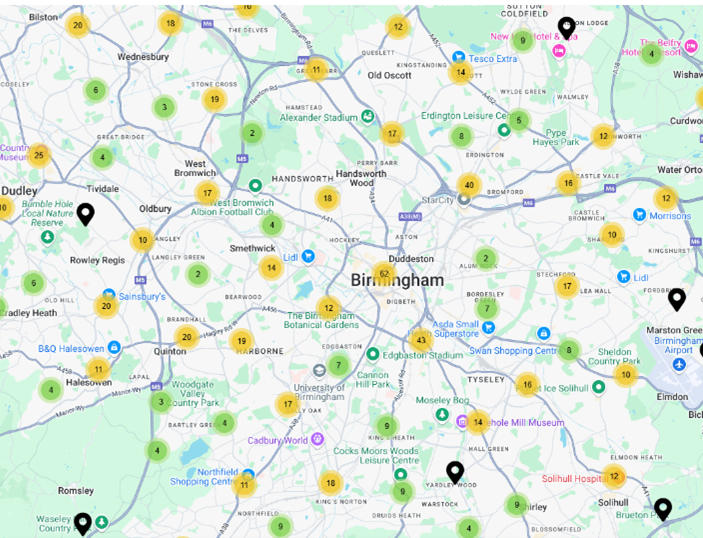You Ask, We Answer
We’re technical experts in the complex and ever-changing world of civil and structural engineering design and technical approval.
WHY IS TRAFFIC DATA IMPORTANT
WHY IS TRAFFIC DATA IMPORTANT?
Traffic data comes in many forms and underpins a lot of the work we do as Transport Planners.
Traffic data helps us to analyse vehicle and pedestrian movements in different settings. Various types of traffic data help us to determine, traffic volume, traffic speeds, and patterns of movements which can all be used to support infrastructure design, as well as inform detailed traffic capacity assessments and models commonly used in Transport Planning practice.
There is a host of publicly available traffic data and in the interests of costs and practicality for our clients, we always consult what data is freely available to us prior to designing and commissioning new data collection. We must consider timing; the majority of data is only considered valid outside of school holidays; this is to ensure a robust representative of typical conditions are observed.
There are several different types of traffic data, each collected through different methods. While specialist contractors are typically the most efficient option, it is sometimes feasible to collect the data in-house, and we have the capability to do this. The key types of traffic data commonly used by Transport Planners include:
- Manual Classified Turning Counts (MCC): A breakdown of turning movements at road junctions, broken down into time periods (usually 15 minutes) and classified by vehicle type. MCC data is usually collected to cover a typical weekday morning and afternoon peak period to ensure the “worst case” scenario is captured.
- Queue Surveys: A snapshot of the length of a queue on an approach to a junction (usually broken down into 5 minute periods across a typical peak period). Useful to validate junction models when collected in conjunction with MCC data.
- Automatic Traffic Counts (ATC): An automated survey of vehicles crossing a point (link) on the highway network. Data can be broken down into vehicle class and placed into “speed bins”. ATC data provides an indication of volume and speed across the survey period, which is usually no less than 7 days.
- Automatic Number Plate Recognition (ANPR): Cameras record vehicle registration plates. Can form a network to track movements or a fixed point to record dwell times in a car park for instance. Often used for enforcement of traffic regulation orders.
- Parking Beats: Tracks vehicles parked, including volume and duration, typically recorded in 15-minute intervals.
- NMU Surveys (Non-Motorized Users): There are several methods of collecting data relating to pedestrians, cyclists and equestrian traffic. Automated methods include mobile phone Bluetooth tracking.


Typical applications for traffic data include:
- Junction Capacity Assessment and Traffic Modelling: These assessments vary in complexity, and the level of data required typically increases with the complexity of the model. We have in-house capability to undertake and audit all types of stand-alone junction models (including ARCADY and PICADY modules of JUNCTIONS software and LinSig).
- Validation: Queue surveys are used to validate junction models and ensure their accuracy in real-world conditions.
- Visibility Splays: Vehicle speed data assists in the design and placement of new junctions by determining required sight distances.
- Environmental Assessments: Traffic data is crucial for environmental modelling, including Air Quality and Noise Assessments, as it helps model road traffic emissions. We have in-house capability to organise traffic data collection and process traffic data for use in Air Quality and Noise Assessment modelling.
- Parking Demand Profiles: Informs the analysis of peak parking demand and dwell times, crucial for parking planning.
- Car Parking Analysis/Studies: Traffic data supports parking assessments, which may be used to justify new developments or assist local authorities in optimizing parking stock. We have in-house capabilities to conduct detailed car parking studies.
In each case, the quality and detail of traffic data directly influence the accuracy and effectiveness of the analysis.
If you are in need of development support through traffic data, our head of Transport Planning Tom Price will be able to talk more about you needs.
